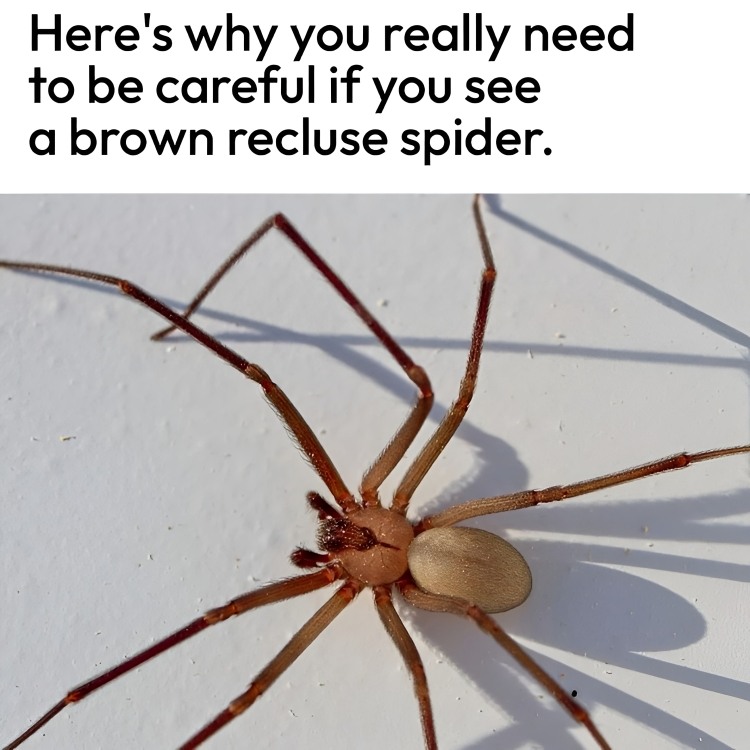The Brown Recluse Spider is one of the most widely feared spiders in the United States. Known for its violin-shaped marking and potentially dangerous bite, this spider has built a reputation that often outweighs reality. While Brown Recluse Spider bites can sometimes lead to serious skin damage, these cases are rare. In fact, most bites result in mild symptoms, or no symptoms at all.
Misidentification and misinformation contribute heavily to the fear surrounding this species. Found mainly in the central and southern U.S., the spider prefers to stay hidden in quiet, undisturbed places. It avoids humans whenever possible and typically only bites when accidentally trapped. In this slideshow, we’ll clear up the confusion, explore what Brown Recluse Spiders really do, how to spot one, and what to do if you’re ever bitten. Understanding the facts helps replace fear with calm confidence.
The Brown Recluse Spider isn’t very large, measuring roughly the size of a penny. It ranges in color from tan to dark brown and features a violin-shaped marking on its back. Another clue is its six eyes, unlike the eight eyes most spiders have. But even with those traits, it’s often mistaken for other harmless spiders. These spiders prefer warmth and darkness. They hide in places like attics, basements, closets, and cardboard boxes. Outdoors, they settle in woodpiles, sheds, and under debris. You’re most likely to encounter one in the Midwest or southern parts of the U.S. If you live outside those areas, chances are you’ll never see one. Still, it’s smart to shake out clothes, towels, and shoes if you live in a high-risk region.
Despite their reputation, Brown Recluse Spiders aren’t aggressive. Their name says it all, they’re reclusive. These spiders don’t hunt or chase people. They bite only when they feel trapped, such as inside a shoe or under a bed sheet. Most bites happen by accident. In fact, many people live with Brown Recluses in their homes and never get bitten. That’s how good they are at staying out of sight. When you give them space, they return the favor. Knowing this can help reduce unnecessary fear and panic.
A Brown Recluse Spider bite doesn’t always cause severe damage. Many people experience only mild redness or swelling. Some don’t notice the bite at all. In rare cases, a blister forms and may turn into an open sore with dead tissue, a condition called necrosis. These are the infamous “volcano lesions” shown online, but they are outliers, not the norm. Often, other skin issues, like MRSA, allergic reactions, or infections, get misdiagnosed as spider bites. This adds to the myth. True Brown Recluse Spider bites are much less common than people think. And even when they do occur, they rarely require drastic treatment.






